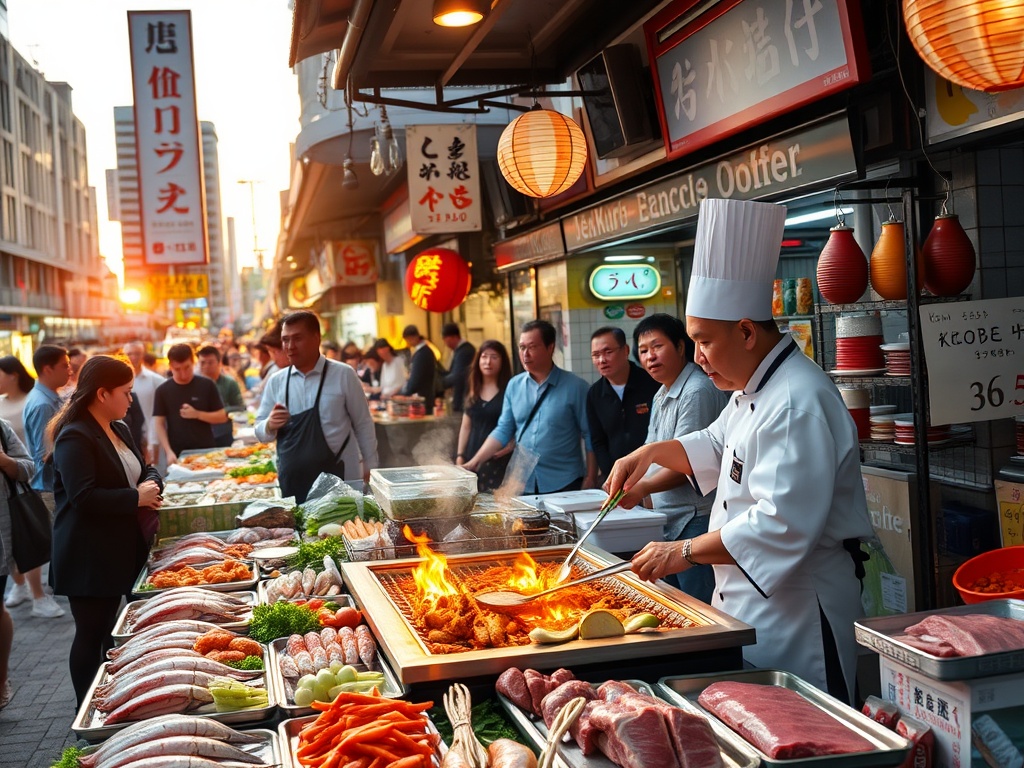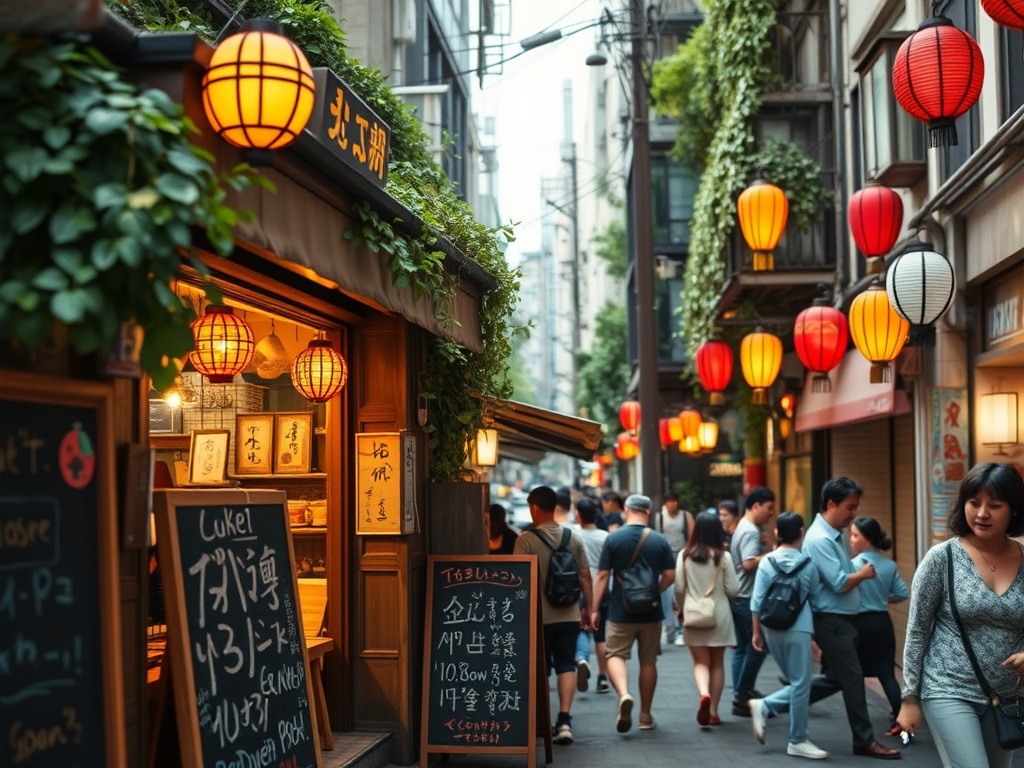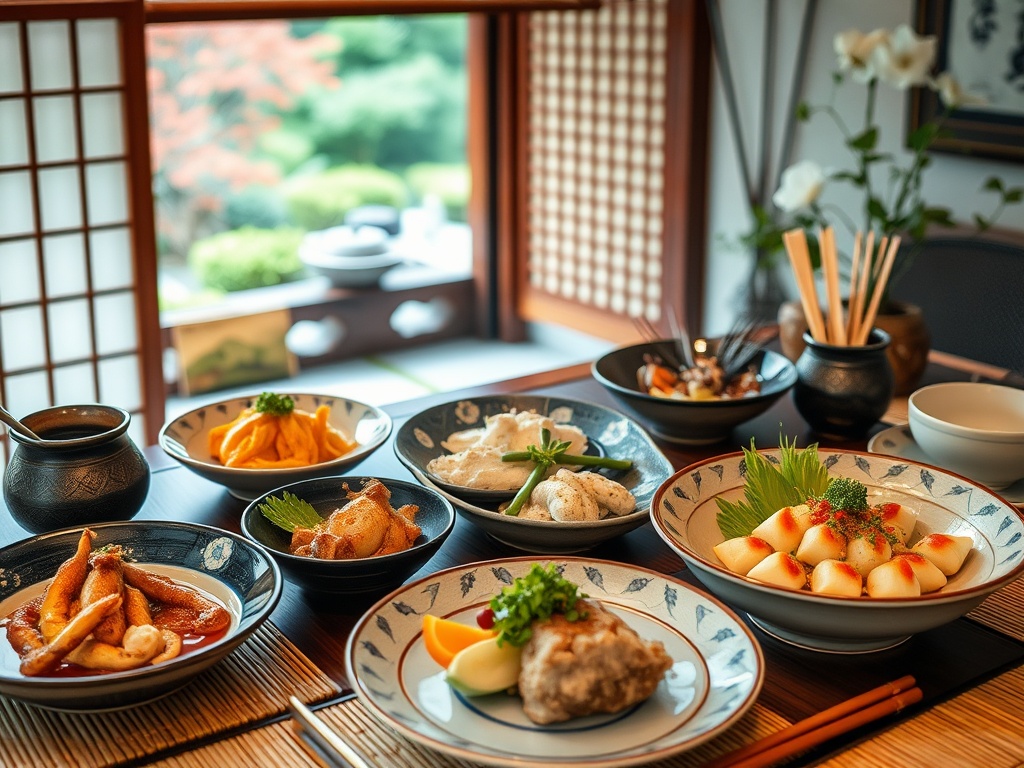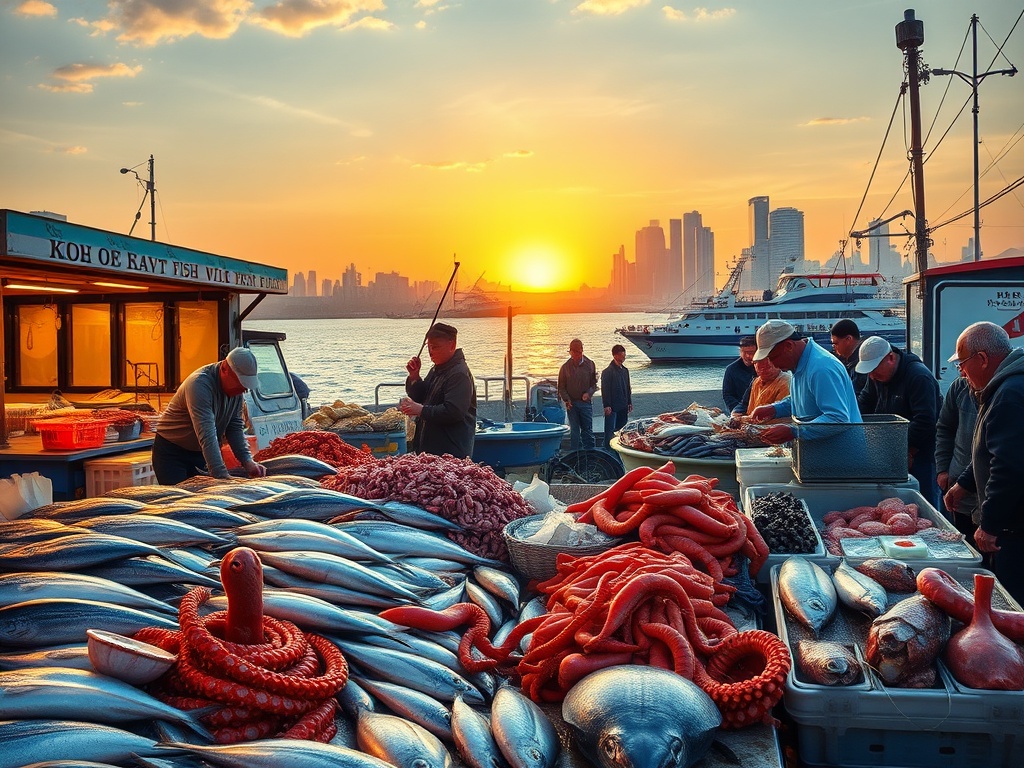Savoring the Unexpected: Kobe’s Hidden Culinary Gems
Win a Free Trip to Japan!
Experience cherry blossoms and ancient temples
Kobe, a city renowned for its luxurious beef, offers far more than its iconic gastronomic delight. Beyond the marbled slices of wagyu, Kobe’s culinary landscape is a treasure trove of hidden gems waiting to be discovered by the adventurous palate. For those willing to stray off the beaten path, Kobe reveals a diverse array of flavors that encapsulate the true spirit of Japanese cuisine.
While Kobe beef might steal the spotlight, the city’s street food scene is a vibrant tapestry of flavors that offers an authentic taste of local culture. From bustling markets to quaint alleyways, you’ll find a myriad of stalls serving up delicacies that will surprise and delight.
- Akashiyaki: Often compared to takoyaki, these egg-rich octopus balls are a must-try snack that offers a softer, more delicate texture.
- Wagyu Croquettes: Experience the rich flavors of Kobe beef in a crispy, deep-fried form.
- Ikayaki: This grilled squid dish, often served with a savory sauce, is a beloved street food staple in Kobe.
The historic districts of Kobe are not just a feast for the eyes but also a haven for food lovers seeking authentic experiences. As you wander through these charming areas, you’ll encounter eateries that have preserved the culinary traditions of the region.
Arima Onsen: Known for its therapeutic hot springs, Arima Onsen is also home to traditional kaiseki dining, where each dish is a work of art, carefully crafted to highlight seasonal ingredients.
Kitano-cho: This picturesque district is dotted with cafes and restaurants offering fusion cuisine that blends Western and Japanese influences, a nod to Kobe’s international heritage.
Beyond Beef: The Lesser-Known Delicacies of Kobe
While the world knows Kobe for its premium beef, the city’s culinary scene holds many more surprises that deserve the spotlight. If you venture beyond the sizzling grills of wagyu, you’ll find a spectrum of flavors that paint a vivid picture of Kobe’s rich gastronomic heritage. These lesser-known delicacies not only showcase the city’s diverse palate but also offer a deeper understanding of its cultural tapestry.
Kobe’s proximity to the sea blesses it with an abundance of fresh seafood, often overshadowed by its beefy counterpart. Dive into the ocean’s bounty with these exquisite offerings that promise to tantalize your taste buds.
- Anago Meshi: Savor the delicate flavors of grilled anago (conger eel) served over a bed of fragrant rice. This dish is celebrated for its subtle sweetness and tender texture.
- Kobe Saba Sushi: A local favorite, this sushi features pickled mackerel that combines a perfect balance of umami and tang.
Beyond savory delights, Kobe is also home to a myriad of sweet treats that will delight dessert lovers. Traditional and modern flavors merge to create confections that are both visually stunning and delicious.
The following list highlights some of Kobe’s most beloved sweet offerings:
- Nada Manju: A sweet bun filled with red bean paste, Nada Manju is a classic treat that pairs perfectly with green tea.
- Kobe Pudding: This creamy dessert, known for its silky texture, is often infused with flavors like matcha or black sesame.
Sea to Table: Kobe’s Maritime Marvels Unleashed
Kobe’s culinary landscape is a kaleidoscope of flavors, and while its beef is internationally acclaimed, the city’s seafood offerings unveil a side of its gastronomic identity that is equally extraordinary. Nestled by the Seto Inland Sea, Kobe is a gateway to a maritime bounty that promises a feast for the senses. For travel and tourism enthusiasts, exploring Kobe’s seafood specialties is an adventure that unlocks a deeper connection to the region’s culture and lifestyle.
As you meander through Kobe’s bustling fish markets or dine at its coastal eateries, the freshness of the seafood is palpable and invigorating. Whether you’re an aficionado of sushi, sashimi, or more adventurous dishes, Kobe offers something to tantalize every palate. One of the standout dishes is Shirasu Donburi, a bowl of rice topped with young whitebait, whose delicate flavor and texture are a testament to the city’s proximity to the sea. The shirasu, often caught fresh each morning, is a local favorite that perfectly encapsulates Kobe’s commitment to quality and authenticity.
In Kobe, seafood is not merely a meal; it’s an art form. The city’s chefs are masters of their craft, skillfully preparing dishes that highlight the natural flavors of the sea. A visit to a traditional izakaya reveals the intricate process of creating Kobe Awabi, or abalone. This delicacy is often served in a light broth or grilled to perfection, offering a taste that is both luxurious and refined. The preparation of awabi is a ceremony in itself, showcasing the meticulous attention to detail that characterizes Kobe’s culinary scene.
Sweet Surprises: Dessert Wonders in Kobe’s Food Scene
When one thinks of Kobe, images of its world-renowned beef often come to mind, overshadowing another facet of its culinary brilliance: the city’s irresistible dessert offerings. For those with a sweet tooth, Kobe is nothing short of a confectionery paradise, where traditional Japanese sweets and innovative modern creations coexist in harmony. As you wander through the charming streets of Kobe, be prepared to indulge in a spectrum of flavors that transform each dessert into a delightful journey of discovery.
The journey begins with Kobe’s traditional confections, where each bite is a nostalgic nod to the city’s rich cultural past. One such treat is the delicate Nada Manju, a bun filled with sweet red bean paste, beautifully capturing the essence of simplicity and tradition. This dessert pairs perfectly with a warm cup of green tea, offering a soothing experience akin to a serene moment in a Zen garden. Another must-try is the Kobe Pudding, renowned for its silky texture and subtle sweetness. Infused with flavors such as matcha or black sesame, it embodies the sophistication of Japanese dessert craftsmanship.
Kobe also dazzles with its fusion desserts, where international influences breathe new life into classic recipes. Imagine savoring a matcha-infused tiramisu that blends the robust flavor of green tea with the creamy indulgence of this Italian favorite. Or perhaps a Yuzu Cheesecake, where the citrusy tang of Japanese yuzu fruit cuts through the richness of the cheese, creating a harmonious balance that dances on the palate. These modern creations reflect Kobe’s unique position as a cultural crossroads, where East meets West in the most delicious of ways.
Cultural Melting Pot: International Influences on Kobe Cuisine
Nestled between mountains and sea, Kobe is a city that has long been a crossroads of cultures, reflected vividly in its dynamic food scene. This unique geographical position has turned Kobe into a culinary tapestry, where international influences blend seamlessly with traditional Japanese flavors. Travelers venturing into Kobe can expect a gastronomic experience that transcends borders, offering a taste of the world through a distinctly Kobe lens.
Kobe’s history as a port city opened its doors to global travelers and traders, each leaving a culinary footprint that has shaped the city’s food scene. Dining in Kobe, you might find yourself savoring a dish that fuses Italian and Japanese elements, such as a delicate seafood risotto enriched with local ingredients like yuzu and miso. This fusion extends to bakeries where European techniques meet Japanese flavors, resulting in delectable treats like matcha croissants or anko-filled brioches. The blend of East and West is not just a culinary trend but a way of life in Kobe, continually evolving with each new cultural exchange.
Beyond European influences, Kobe has embraced flavors from across the globe, creating an exciting palette for adventurous food lovers. In the heart of the city, you might stumble upon eateries that serve Indian curries with a Japanese twist, or ramen shops offering bowls inspired by Southeast Asian spices. The city’s diverse population has fostered an environment where culinary experimentation is celebrated, leading to a food culture that is both richly varied and deeply interconnected. As you explore Kobe’s streets, each bite reveals a story, weaving together the diverse threads of its international heritage.
Street Food Extravaganza: A Journey Through Kobe’s Markets
For the travel and tourism enthusiasts seeking an authentic taste of Japanese culture, Kobe’s street food scene offers an exhilarating dive into a world of flavors. While the city may be synonymous with its luxurious beef, the bustling markets of Kobe tell a different story—one of culinary diversity and vibrant local life. From hidden alleyways to lively street corners, these markets are a culinary adventure waiting to unfold.
Wandering through Kobe’s markets is like embarking on a gastronomic treasure hunt. Each stall is a gateway to a unique culinary experience that reflects the city’s rich cultural tapestry. The sizzle of grills and the aroma of freshly prepared dishes beckon visitors to explore deeper. Among the highlights is Akashiyaki, a delightful snack akin to takoyaki but with a softer texture, often enjoyed with a dip in savory dashi broth. This local favorite exemplifies the subtle yet profound flavors that define Kobe’s street food.
Kobe’s street food is not just about traditional Japanese fare; it also celebrates a fusion of flavors that pay homage to the city’s international influences. As you navigate the markets, you’ll encounter dishes that blend Eastern and Western culinary techniques, creating a dynamic eating experience. Wagyu Croquettes, for instance, offer a crispy exterior that gives way to the rich, succulent taste of Kobe beef, embodying the perfect marriage of texture and flavor. These fusion delights are a testament to Kobe’s role as a cultural melting pot.



